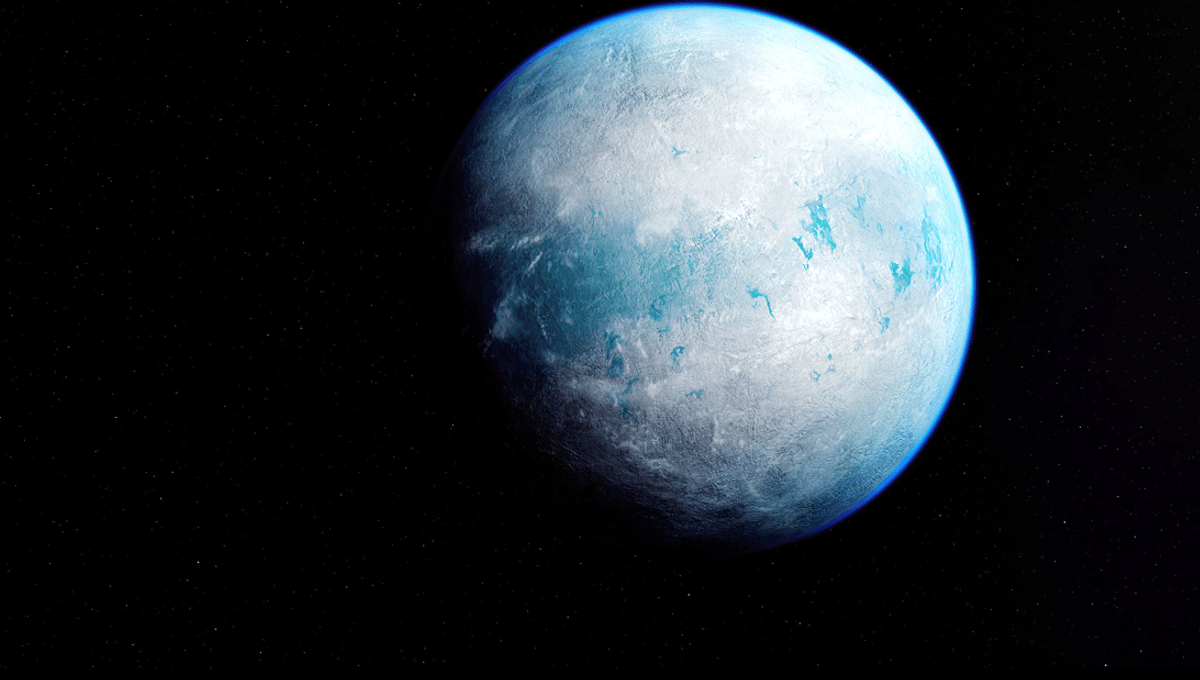
Earth’s worst day at the start of the Permian extinction saw the planet’s surface transformed into a fiery hellscape. However, at other times in its history, Earth has become a ball of ice and snow.
“700 million years ago, Earth was a giant snowball cloaked in ice from pole to pole – a global deep freeze that held the planet in a stranglehold, threatening the survival of the earliest complex life,” reads the synopsis for Ancient Earth: Frozen, one episode of a new documentary series from NOVA created in partnership with the BBC (who aired the series Earth earlier this year).
“How did life manage to hold on in this forbidding world? Leading scientists investigate how this catastrophe may have become a catalyst for life to evolve in creative new ways as it bounced back from the brink – setting the stage for the astonishing complexity we see today.”
We spoke to senior producer Caitlin Saks to find out more about what Earth endured in its frostiest days, and how you go about capturing such an alien chapter in our planet’s history on camera.
What can people expect from this episode?
I think a lot of people don’t even realize that there was a time in Earth’s history when our entire planet was covered in ice from pole to pole. We were a big snowball. And it’s pretty surprising because, how could life have possibly survived that? That’s the big question that scientists have been investigating.
This episode really delves into what happened: What caused that era in Earth’s history? How did we get out of it? And how did life get through it? It seems like it may have been instrumental in actually promoting the evolution and diversification of life towards more complex life.
Is it difficult recreating landscapes for Earth’s more alien distant history?
Yes and no. The way we understand what happened on Earth in the past is by looking at the geologic evidence that we can find today. We can make inferences from processes happening today about what was happening in the past. So, for example, in Iceland, we’re looking at where two plate tectonics are spreading apart today. We know that plate tectonics was also happening millions and hundreds of millions of years ago, so we can see the same sort of Earth processes happening today on the planet, and that informs us about what happened in the past and also kind of gives us an image to attach to what happened in the past.
Of course, we have no idea what things actually looked like, we only have the best scientific evidence that we can gather, and we worked with so many different scientists and advisors to try to get these graphics as accurate as we could.
What kind of scientists did you work with?
We’ve worked with experts across the geosciences, palaeontologists, palaeobotanists, whoever was most expert on that era and that specific part of the geologic story. Geology is a fantastically huge field, and many scientists are getting more specialized in specific areas or specific techniques that they use.
What do you hope people will take away from the series?
Kind of just how awesome the story of our planet is. I think a lot of people don’t think very much about how Earth got to be the way it is, how different it used to be, how much it’s changed, and how extraordinary that is. It’s taken an extraordinary series of events to lead to our own evolution and our being here.
There’s been so many different chapters of the story, each one fascinating, exciting, interesting, and illuminating. It can tell us a lot about how our Earth works and how we can best care for the planet. We are the first technological, self-aware species that has the ability to look back 4.5 billion years, see what the Earth has done, and then try to change our own actions to shape its future course in a way that allows us to still live on it. That’s pretty exciting.
Catch Ancient Earth on PBS this Wednesday, October 12, with episodes airing weekly.
Source Link: The Icy Odyssey Of Ancient Earth's Frozen Era Is Explored In A New Series